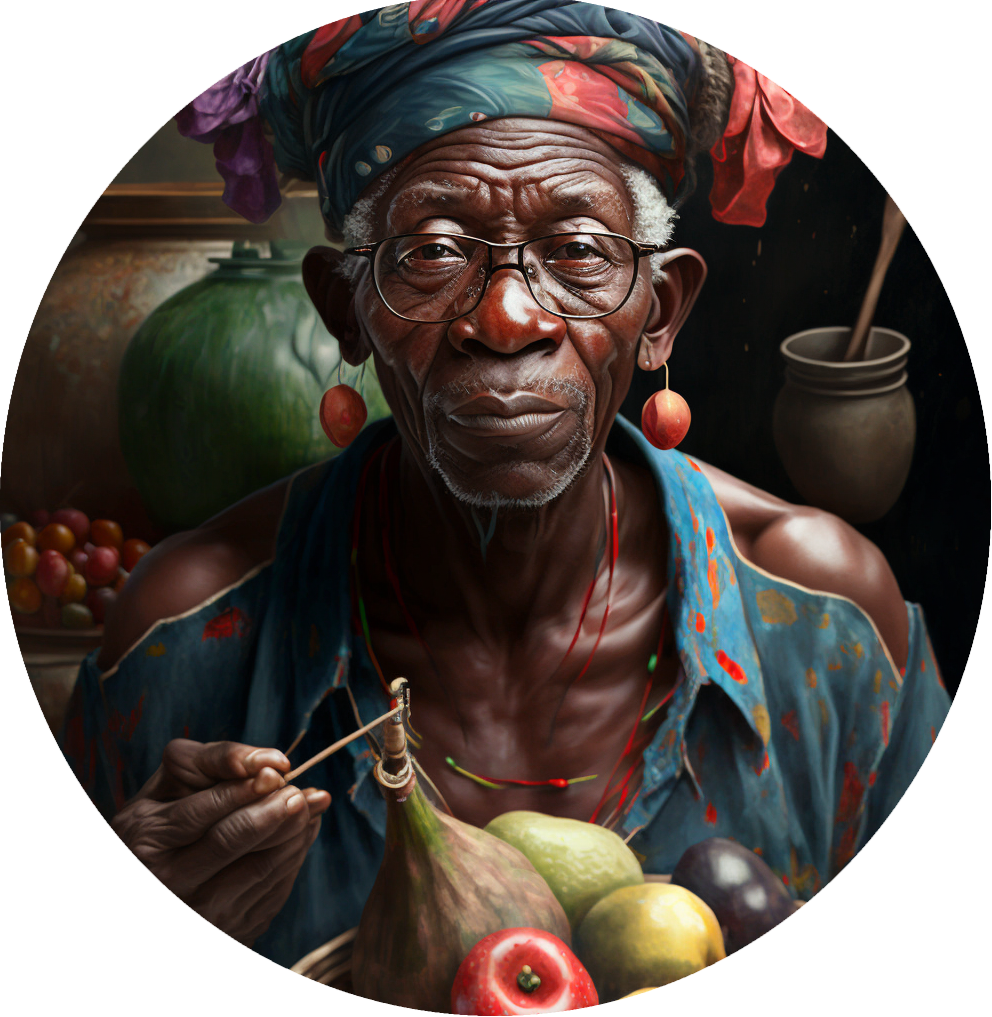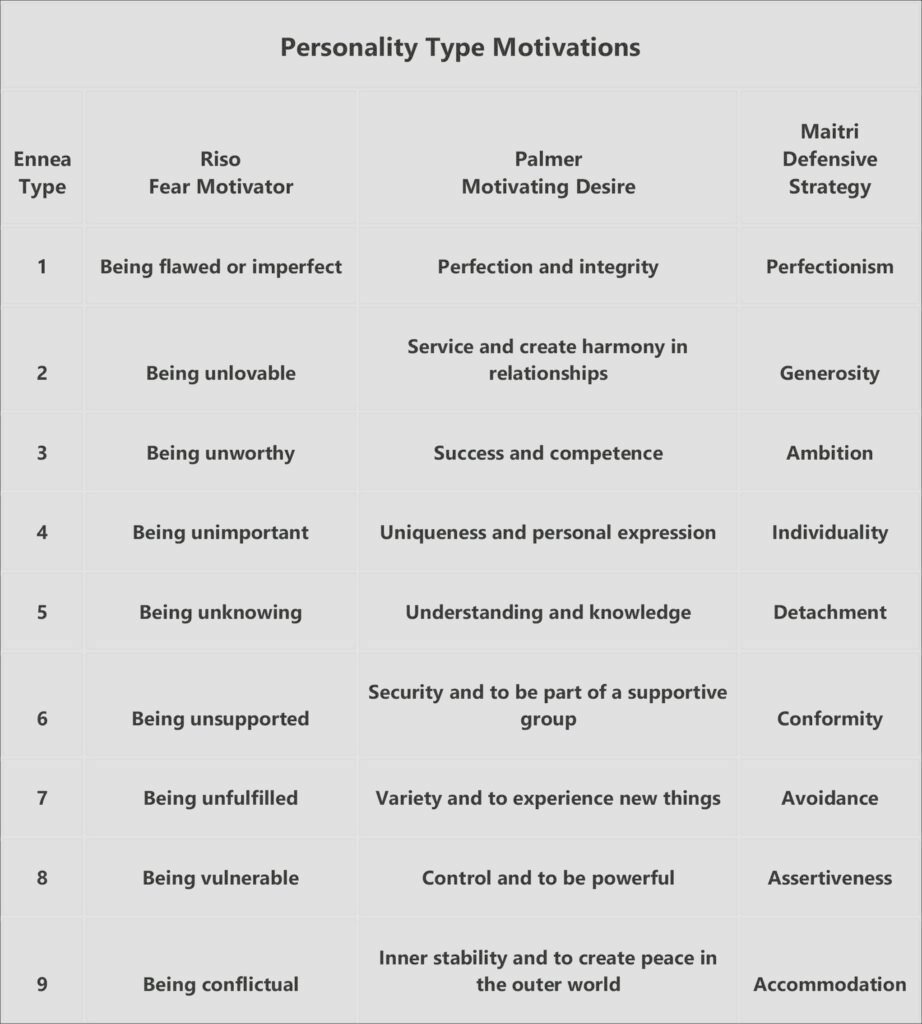People can’t get enough of the enneagram!
Are you ready to unlock the secrets of your personality? Look no further than the Enneagram, a model of personality types that has captivated self-discovery enthusiasts for the past 30 years.
I am excited to share my unique perspective on this fascinating system with you. In this blog post, we will delve into the intricacies of the Enneagram’s nine distinct personality types, and discover how understanding them can lead to greater self-awareness and personal growth.
But first, let’s answer the question on everyone’s mind: what exactly is the Enneagram? The Enneagram symbol, a nine-pointed diagram, represents nine different personality types and their specific characteristics, motivations, and potential growth areas. The Enneagram is built on the principle that our personalities are driven by our core fears and desires, and that each person can be placed into one of these nine types based on their unique blend of these fears and desires.
So, are you ready to discover which Enneagram type you are and unlock the secrets of your personality? Join me on this journey of self-discovery as we explore the Enneagram together!

As we dive deeper into the Enneagram, we come across the concept of wings. Wings are the two types adjacent to an individual’s main type, and they can play a significant role in shaping how a person expresses their core traits. For example, a person with a dominant type of Four (The Individualist) with a wing of Five (The Investigator) may express themselves differently than someone with a dominant type of Four with a wing of Three (The Achiever). Understanding your wings can give you a more nuanced understanding of yourself and others.
Another important concept in the Enneagram is that of integration and disintegration. This refers to the mental and emotional states of each type. When a person is in a state of integration (more relaxed and secure), they are able to access their strengths and make use of them in a healthy and productive way. In contrast, when a person is in a state of disintegration (more stress and defensiveness), they tend to fall back on their coping mechanisms and may struggle to access their strengths. Understanding these states can help you identify patterns in your behavior and work towards achieving greater balance and well-being.
Finally, the Enneagram also addresses the concept of instinctual subtypes. This refers to the different ways in which each type can express their personality based on their dominant instincts – self-preservation, social, and sexual. For example, a person with a dominant type of Seven (The Enthusiast) with a self-preservation instinctual subtype may prioritize their physical and material well-being, while someone with a social instinctual subtype may focus more on their relationships and connections with others. Understanding your instinctual subtype can give you further insight into your motivations and behavior.
As we can see the Enneagram is a rich and complex system, with many layers to explore and discover. So buckle up as we dive deeper into this journey of self-discovery and personal growth!
A Framework for Self-understanding
One of the major advantages of the Enneagram is its ability to provide a framework for understanding how different personality types interact with one another and how each type reacts to more or less stress in their lives. This can be particularly helpful in improving communication and building stronger relationships with others.
Many people, when first introduced to the Enneagram, are amazed at the insights it provides into their personality, behavior, and history. The Enneagram can be a powerful tool for self-awareness and personal development.
It’s also important to remember that the Enneagram is just one model of personality types and that individuals may exhibit traits from multiple types. Each of us have all the Enneagram types in our psyche, it’s a matter of which one is more dominant in contributing to our sense of self and our habits of attention and behavior.
It’s also worth noting that the Enneagram is not a one-size-fits-all solution to understanding oneself and should be used as one tool among many in the pursuit of personal and professional growth. It’s not meant to be used for labeling or putting people into boxes, but to help people understand themselves and their relationships with others better.
So, whether you’re looking to improve your relationships, gain a deeper understanding of yourself, or simply learn more about human nature, the Enneagram is definitely worth exploring. You’ll be amazed at the insights and understanding you’ll gain!

A Map of the Human Psyche
At its core, the Enneagram is a map of the human psyche that describes how individuals perceive and respond to the world around them. It is made up of nine distinct personality types, each of which is represented by a number and with its own set of characteristics, motivations, and tendencies. The Enneagram provides a holistic understanding of the human psyche, taking into account not only an individual’s personality traits but also their unconscious drives and inner conflicts. By understanding their enneagram type, individuals can gain insight into their patterns of thought, emotion, and behavior, and learn how to grow and develop in healthy ways.
By exploring the different “enneatypes”, you can gain insight into yourself and better understand your beliefs and impulses. This deeper understanding of yourself can lead to a more fulfilling life, both personally and spiritually. With this knowledge, you can take your journey of self-discovery to the next level.
The Enneagram excels at unlocking understanding of the “false self”, the sense of self based on history, which is key to unlocking personal and spiritual growth. By exploring the nine distinct personality types, we can gain a better understanding of ourselves as well as a deeper understanding of others. This can help us form healthier relationships and cultivate better communication. With this knowledge, we can create a better world for ourselves and for those around us, and that’s an incredibly powerful tool to have at our disposal.
Understanding Enneagram Types
Do you ever find yourself wondering what personality type you are? The Enneagram can help us identify our strengths, weaknesses, and motivations, allowing us to become more self-aware and open to personal growth. This sophisticated system of personality typing provides an in-depth look into one’s sense of self and their behavior, and it’s not only a psychological tool but potentially a spiritual one as well.
Overview of Enneagram Types
The enneagram of personality types is an easily understood, yet sophisticated system of personality typing. It is a psychological and, potentially, spiritual tool that can help people improve their personal lives and support their spiritual growth by exploring their ego-self’s, motivations, strengths, weaknesses, and potential. It provides an in-depth look into one’s sense of self and their behavior.
I can attest to the power of this system in both personal and professional settings. In the workplace, understanding the Enneagram can lead to improved communication and collaboration within teams. By understanding the personality types of our coworkers, we can learn to communicate more effectively and find ways to work together more harmoniously.
But the benefits of the Enneagram don’t stop there. This sophisticated system of personality typing is a powerful tool for self-discovery and personal growth. By exploring the different “enneatypes”, we can gain insight into ourselves and better understand our beliefs and impulses. Understanding our personality is key to unlocking personal and spiritual growth, as it exposes what we refer to as the “false self,” the sense of self based on our history. The enneagram excels at unlocking this deeper understanding of ourselves which can lead to a more fulfilling life, both personally and spiritually.

How the Enneagram Can Help You Understand Yourself and Others
By exploring the nine distinct personality types, we can gain a better understanding of ourselves as well as a deeper understanding of others. This can help us form healthier relationships and cultivate better communication. With this knowledge, we can create a better world for ourselves and for those around us, and that’s an incredibly powerful tool to have at our disposal. It’s a great first step on our journey of personal discovery and spiritual growth. With this knowledge, we can create a better world for ourselves and for those around us.
Overall, the enneagram is a powerful tool that can also be beneficial in professional settings, by helping team members understand their own personalities as well as the personalities of their coworkers. This understanding can lead to improved communication and collaboration, as team members learn how to work with and understand one another’s strengths, weaknesses, and motivations. Furthermore, it can also help managers and leaders in understanding the different personalities within their team, and how they can best lead and manage them.
Additionally, the enneagram can be used as a tool for personal development, by identifying the areas where one may have difficulty and need improvement. This self-awareness can help individuals make changes in their life, and to become more self-aware, more self-accepting, and more open to personal growth. So, are you ready to discover your true self?
The Nine Enneagram Types According to Don Riso and Helen Palmer
Helen Palmer and Don Riso authored two of the first and most popular books on the enneagram of personality types. Both were early pioneers in the field of the enneagram, both promoting it and teaching it to thousands of people worldwide. They each have their own unique approach to understanding the nine personality types.
Palmer’s approach to the enneagram is based on the idea that each of the nine types has a specific set of characteristics and tendencies that are associated with their core motivations. She emphasizes the importance of understanding how these motivations influence an individual’s behavior and relationships, and how they are used as a path toward more self-knowledge.
Riso’s approach focuses more on the unconscious dynamics that underlie each of the nine types. He believes that a specific fear motivates each type, and that understanding these underlying drives are key to understanding why individuals behave the way they do. Riso also emphasizes the importance of integrating the different parts of the psyche in order to achieve personal growth.
While there are some similarities between the two approaches, there are also some significant differences. For example, Palmer places a greater emphasis on the positive aspects of each type, while Riso focuses more on the negative aspects. Palmer’s approach is considered to be more accessible and user-friendly, while Riso’s approach is seen as more complex and theoretical.
Despite these differences, both Palmer and Riso’s approaches to the enneagram have helped to popularize the system and make it more accessible to a wider audience. Their books and teachings have provided valuable insights into the enneagram and have helped countless people understand themselves and others better.
Enneagram Type 1 – A strong sense of integrity built upon right and wrong that drives a desire for improvement and excellence.
According to Riso, individuals with an enneagram type one personality are motivated by a fear of being flawed or imperfect, and they are perfectionists who are highly principled and conscientious. They are often hardworking, responsible, and reliable, and they strive to do things “the right way.” However, they can also be critical of themselves and others, and they may struggle with feelings of guilt and a tendency to be overly critical.
Palmer’s description of enneagram type one is similar, but with a slightly distinct emphasis. She describes individuals with this type as having a strong sense of right and wrong, and a desire to live their values. They are responsible, orderly, and ethical, and they strive for improvement and excellence in all areas of their life. However, they can also be self-critical and prone to feeling guilty or anxious when they feel that they have not lived up to their own high standards.
Overall, both Riso and Palmer’s descriptions of enneagram type 1 highlight the importance of integrity and a desire for improvement, but they offer slightly different perspectives on the specific motivations and challenges of these nine personality types.
Enneagram 1 might say

- “I am responsible and committed to doing what is right.”
- “I am always striving to be the best version of myself.”
- “I am driven to improve the world and make it a better place.”
- “I am a perfectionist and set high standards for myself.”
- “I am a hard worker and dedicated to achieving my goals.”
Enneagram Type 2 – motivated by a desire to be of service and to create harmony in relationships.
Riso says that individuals with an enneagram type 2 personality are motivated by a fear of being unlovable or unwanted, and they are generous, caring, and empathetic. They are often helpful and supportive, and they strive to be needed and valued by others. However, they can also struggle with feelings of inadequacy and a tendency to be codependent or overly helpful.
Palmer describes individuals of this type as being caring, generous, and empathetic, and as having a strong desire to be of service to others. They are often supportive and nurturing, and they strive to create harmony in their relationships. However, they can also struggle with feelings of inadequacy and a tendency to be codependent or overly helpful.
Both Riso and Palmer highlight the importance of a desire to help and be of service to others.
Enneagram 2 might say:

- “I am caring and supportive of those around me.”
- “I am always looking for ways to help and serve others.”
- “I am a giver and place others’ needs above my own.”
- “I am a compassionate and empathetic person.”
- “I am a nurturing and loving individual.”
Enneagram Type 3 – motivated by a desire for success and achievement.
Riso notes that enneagram type 3’s personality are motivated by a fear of being unworthy or incompetent, and they are driven, ambitious, and focused on achieving success. They are often hardworking and efficient, and they strive to be competent and accomplished in all areas of their life. However, they can also be prone to feelings of inadequacy and a tendency to be overly concerned with image and status.
Palmer’s emphasis describes individuals of this type as being driven, ambitious, focused on achieving success, and having a strong desire to be competent and accomplished. They are often efficient and hardworking, and they strive to be respected and admired by others. However, they can also struggle with feelings of inadequacy and a tendency to be overly concerned with image and status.
Enneagram 3 might say:

- “I am ambitious and driven to succeed.”
- “I am a high performer and strive for excellence.”
- “I am a go-getter and always looking for ways to improve.”
- “I am image-conscious and want to present myself in the best light.”
- “I am a competent and capable individual.”
Enneagram Type 4 – emotionally sensitive, creative, and introspective.
Type 4, according to Riso, is motivated by a deep inner fear of being without identity or worth, and a desire to be unique and to stand out from others. As a result, they are highly self-aware and introspective and may struggle with feelings of sadness or melancholy when they feel they are not living up to their own potential.
Palmer emphasizes the interpersonal dynamics of Enneagram Type 4, viewing them as emotionally expressive, creative, and sensitive individuals who are motivated by a desire to connect with others on a deep, emotional level. We often see them as artistic and sensitive but may struggle with feelings of inadequacy and a tendency to become overly self-absorbed.
Riso focuses more on the individual psychological motivations of this type, while Palmer emphasizes the interpersonal dynamics and relationships of Enneagram Type 4.
Enneagram 4 might say:

- “I am unique and authentic, and I express myself in my own way.”
- “I am sensitive and deeply emotional.”
- “I am creative and expressive.”
- “I am introspective and always seeking to understand my own emotions.”
- “I am deeply connected to my feelings and the emotions of others.”
Enneagram Type 5 – is an individual who is highly analytical, independent, and self-sufficient.
Riso speaks of Enneagram Type 5 as being motivated by a deep inner fear of being overwhelmed or incompetent, and a desire to understand and know as much as possible in order to feel secure and capable. As a result, they are highly analytical, independent, and detached, and may struggle with feelings of isolation or a lack of connection to others.
Palmer views type 5 as independent, analytical, and resourceful individuals who are motivated by a desire to understand the world around them and to feel competent and self-sufficient. We often see them as knowledgeable and reliable but may struggle with a tendency to become overly detached or isolated from others.
Enneagram 5 might say:

- “I am a thinker and always seeking to learn and understand more.”
- “I am independent and value my autonomy.”
- “I am private and keep my counsel.”
- “I am reflective and enjoy time alone to process and analyze information.”
- “I am knowledgeable and well-informed.”
Enneagram Type 6 – is responsible, loyal, and security-oriented.
According to Riso, a deep inner fear of being without support or guidance, and a desire to feel secure and to have a strong sense of connection to others motivates enneagram type sixes. As a result, they are highly responsible and reliable, and anxious and may struggle with feelings of insecurity or a lack of confidence in their own decisions.
Palmer focuses more on the interpersonal dynamics of type six, viewing them as responsible and loyal, and supportive individuals motivated by a desire to be a part of a team or community.
Enneagram 6 might say:

- “I am reliable and responsible, and can be relied on to follow through.”
- “I am a loyal and supportive friend.”
- “I am a hard worker and committed to doing my best.”
- “I am responsible and take my commitments seriously.”
- “I am a team player and work well with others.”
Enneagram Type 7 – is spontaneous, energetic, and adventurous.
Palmer emphasizes the interpersonal dynamics of enneagram type 7, viewing them as energetic, spontaneous, and optimistic individuals motivated by a desire to experience new and exciting things. We often see them as fun-loving and adventurous but may struggle with a tendency to become scattered or over-committed.
While Riso sees type 7 as motivated by a deep inner fear of being deprived or stuck in a painful situation, and a desire to find enjoyment and avoid pain. As a result, they are highly optimistic, spontaneous, and restless and may struggle with feelings of futility or a lack of meaning in their lives.
Enneagram 7 might say:

- “I am adventurous and love trying new things.”
- “I am optimistic and always look on the bright side.”
- “I am spontaneous and enjoy living in the moment.”
- “I am energetic and full of ideas.”
- “I am a positive and joyful person.”
Enneagram Type 8 – an individual who is self-confident, assertive, and decisive.
For Riso, a deep inner fear of being controlled or manipulated by others, and a desire to be in control and to protect themselves and others motivates enneagram type 8. As a result, they tend to be strong-willed, assertive, and confrontational and may struggle with feelings of vulnerability or a lack of intimacy in their relationships.
Palmer offers type 8 as self-confident, assertive, and decisive individuals who are motivated by a desire to be in control and to protect themselves and others. They are often seen as powerful leaders but may struggle with a tendency to become overly aggressive or domineering.
Enneagram 8 might say:

- “I am a leader and take charge when necessary.”
- “I am independent and self-reliant.”
- “I am assertive and speak my mind.”
- “I am confident and self-assured.”
Enneagram Type 9 – is easygoing, receptive, and peace-loving. However, they differ in their understanding of the motivations and behaviors of this type.
Riso describes nines as motivated by a deep inner fear of loss or separation, and a desire to maintain inner peace and harmony. As a result, they tend to be easygoing, receptive, and resistant to change and may struggle with feelings of disconnection or a lack of personal identity.
Palmer says nines are easygoing, receptive, and peace-loving individuals who are motivated by a desire to maintain harmony and avoid conflict. We often see them as calming influences but may struggle with a tendency to become overly accommodating or passive.
Enneagram 9 might say:

- “I am easygoing and try to avoid conflict.”
- “I am a peacemaker and strive to create harmony.”
- “I am patient and understanding.”
- “I am accepting and open-minded.”
- “I am a mediator and try to bring people together.”

The Spiritual Enneagram
Sandra Maitri is a well-known author and teacher in enneagram studies, and she has developed a unique approach to understanding the nine personality types. Her books The Spiritual Dimension of the Enneagram and The Enneagram of Passions and Virtues are well-known among enneagram enthusiasts and provide valuable insights into the enneagram and its spiritual dimension.
Maitri emphasizes the enneagram is a map of the human psyche that describes how individuals perceive and respond to the world around them. Her approach is a unique perspective that combines the psychological and spiritual aspects of the nine types. She sees the ego and personality as defensive in nature as Frued postulated. They are coping (survival) strategies developed through trial and error as a means to control our environment and life. Maitri draws attention to the defensive strategies of each type and how they impact our behavior and relationships. Enneagram enthusiasts see Maitri’s approach as a deeper dive into the psyche and providing us with an understanding of the unconscious motivations of each type. This helps individuals to discover their unique path toward self-discovery and self-actualization.
As you can see, all three of these approaches to the enneagram describe the nine personality types in terms of their underlying motivations and tendencies. However, there are some differences in the way that they describe these types, with Riso focusing on the fears that drive each type, Palmer focusing on the core desires, and Maitri focusing on the defensive strategies that each type uses to cope with the challenges and stresses of life.
Here is a chart comparing Don Riso’s, Helen Palmer’s, and Sandra Maitri’s approaches to the nine enneagram personality types:


Enneagram Pioneers Ichazo and Naranjo
Oscar Ichazo and Claudio Naranjo are both renowned figures in the field of enneagram studies, each with their own unique perspective on the nine personality types. Ichazo, the founder of the Arica School, views the enneagram as a tool for spiritual growth and refers to the nine types as “enneatypes,” each associated with a specific “fixation” or limited perspective on the world. Naranjo, a Chilean psychiatrist, and spiritual teacher, sees the enneagram as a tool for understanding psychological defense mechanisms, referring to the nine types as “enneatypes” motivated by specific fears or desires that shape behavior and relationships. Both approaches share similarities in their understanding of the nine types as being associated with specific defense mechanisms or “fixations.”
Here is a chart comparing Oscar Ichazo’s and Claudio Naranjo’s approaches to the nine enneagram personality types:

How to Use the Enneagram to Improve Your Life

There are many ways that the enneagram can improve one’s life. Some of the most common ways include:
- Increasing self-awareness: The enneagram can be a powerful tool for self-discovery, helping individuals to understand their unconscious drives and inner conflicts. This increased self-awareness can lead to a greater sense of personal agency and the ability to make more intentional choices in life.
- Personal development: By understanding their own enneagram type, individuals can gain insight into their patterns of thought, emotion, and behavior, and learn how to grow and develop in healthy ways. This can involve working with a coach or therapist, reading books or taking courses, or taking part in workshops or retreats.
- Improving relationships: By understanding the enneagram types of those around them, individuals can learn to communicate more effectively and find ways to work together more harmoniously. This can be especially helpful in professional settings, where understanding the personality types of coworkers can improve teamwork and collaboration.
- Deepening Psychological and Emotional Insight and Understanding: By learning about the enneagram, individuals can gain a greater understanding of the human psyche and how it operates. This can help them identify areas of their life that may be holding them back and develop strategies for overcoming these challenges and achieving their goals.
